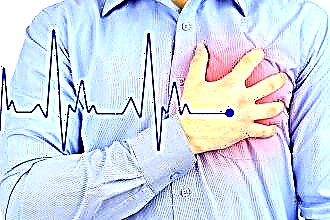Throughout life, any person faces colds. Various viral infections can cause sore throat, runny nose, cough, and other unpleasant symptoms. In this article, such diseases are especially difficult in young children. Today, modern devices - nebulizers - are used to fight infections.
 The term "nebulizer" means a special device that greatly simplifies the process of inhalation, which is usual for us. The principle of operation of the nebulizer is based on the splitting of medicinal solutions into tiny particles up to 5 micrometers in size, converting the liquid into an aerosol. This type of inhalation is simply irreplaceable in the treatment of not only rhinitis, but also infections localized in the lower parts of the respiratory system, since it is able to ensure the delivery of the drug directly to the focus of the disease.
The term "nebulizer" means a special device that greatly simplifies the process of inhalation, which is usual for us. The principle of operation of the nebulizer is based on the splitting of medicinal solutions into tiny particles up to 5 micrometers in size, converting the liquid into an aerosol. This type of inhalation is simply irreplaceable in the treatment of not only rhinitis, but also infections localized in the lower parts of the respiratory system, since it is able to ensure the delivery of the drug directly to the focus of the disease.
The principle of operation and types of nebulizers
Nebulizers are simple and affordable devices that can be used to effectively prevent and treat infections of various origins.
There are several types of nebulizers, which differ depending on the principle of nebulization of the drug:
- Ultrasonic inhalers. The principle of operation of such a device is based on the transformation of a drug into an aerosol using ultrasound. The advantages of such devices are their compactness, low noise level during operation. However, ultrasonic inhalers have one significant drawback - not all drugs can be used in such devices. The thing is that ultrasound is capable of having a negative effect on the molecular compounds of some antibiotics and mucolytic agents.
- Compressor inhalers are devices consisting of a compressor and a chamber, which are interconnected by an air duct. The operation of such an inhaler is based on the process of atomization of particles, which occurs due to the splitting of the drug solution using a strong stream of air. In such a device, almost all types of drugs can be used, carrying out procedures aimed at preventing and treating nasal congestion with a nebulizer. The only drawback of compressor inhalers is the high noise level during operation.
- Mesh nebulizers are the latest generation of inhalers, the principle of operation of which is similar to other types of devices and is based on the formation of the smallest particles, which in this case arise when the drug passes through a special membrane. The main advantages of the innovative inhaler are its compact size and virtually silent operation. However, today the cost of such devices is much higher than that of analogues.
Important! Any type of nebulizer cannot be used for inhalation with essential oils.
 The thing is that the smallest oil droplets obtained during the operation of the devices are able to reach the lungs, leading to serious complications in the form of oil pneumonia.
The thing is that the smallest oil droplets obtained during the operation of the devices are able to reach the lungs, leading to serious complications in the form of oil pneumonia.
When choosing a compressor inhaler, pay attention to the type of nebulizer chamber. So, a direct-flow chamber is distinguished, where the loss of drugs reaches about 70%, as well as chambers, the work of which is activated exclusively during inhalation. In the latter case, the loss of the drug is only 10%.
Advantages
The point is that the advantage of using this type of inhaler lies in the ability of such devices to have a double effect in the treatment of any disease.
Firstly, the work of the nebulizer involves the atomization of the smallest particles of the drug, which makes it possible to evenly distribute the agent in the respiratory system, allowing you to get to the lower sections, improving and enhancing the therapeutic effect.
Secondly, even when water vapor is inhaled, a nebulizer with nasal congestion can significantly improve the condition of the mucous membranes, increasing the outflow of mucus and improving blood circulation in the capillary vessels.
It turns out that if treatment is carried out with a nebulizer, the simultaneous intake of the drug, as well as the inhalation of water vapor, will contribute to recovery, which is indispensable in the treatment of inflammatory processes in the nasal cavity and bronchi.
As practice shows, inhalations with nasal congestion with a nebulizer are quite effective. Indeed, in this case, the vasoconstrictor drugs sprayed by the device gently eliminate swelling in the nose, evenly affecting the entire surface of the mucous membrane. Such procedures have a full, soft and long-lasting effect of drugs, eliminating nasal congestion.
What to look for when choosing a nebulizer?
In order to purchase a high-quality nebulizer, it is necessary to note several main technical characteristics of these devices.
- Inhaler type. The most optimal nebulizer option today is compressor or mesh.
- The capacity of the drug reservoir. It must be big enough.
- Performance. This parameter allows you to adjust the amount of aerosol received per minute, which speeds up the procedure without affecting its effectiveness.

Can a runny nose be treated without a nebulizer?
Of course yes. Indeed, today, conventional steam inhalation can be used to combat a runny nose and other symptoms. Such inhalations are often enough for those who rarely get sick and without any particular complications. However, if the family has small children, one of the relatives is prone to lingering illnesses or has chronic illnesses, you need to think about buying a nebulizer.
Medicines for various types of inhalers
In modern nebulizers, you can use various drugs, the action of which is aimed at treating the common cold, cough, viral and bacterial infections. Alkaline complexes such as sodium chloride and sodium bicarbonate are used to effectively treat nasal congestion. However, it is advisable to use such solutions after the edema has been removed, which vasoconstrictor drugs will help to eliminate.
Basic rules for inhalation
When carrying out inhalations using a nebulizer, the following rules should be observed:
- do not inhale immediately after eating;
- do not talk during inhalation;
- exclude inhalation in conditions of increased body temperature;
- use a special mask when inhaling for children to treat diseases of the upper respiratory tract;
- to treat diseases of the lower respiratory tract through a special tube - a mouthpiece.




